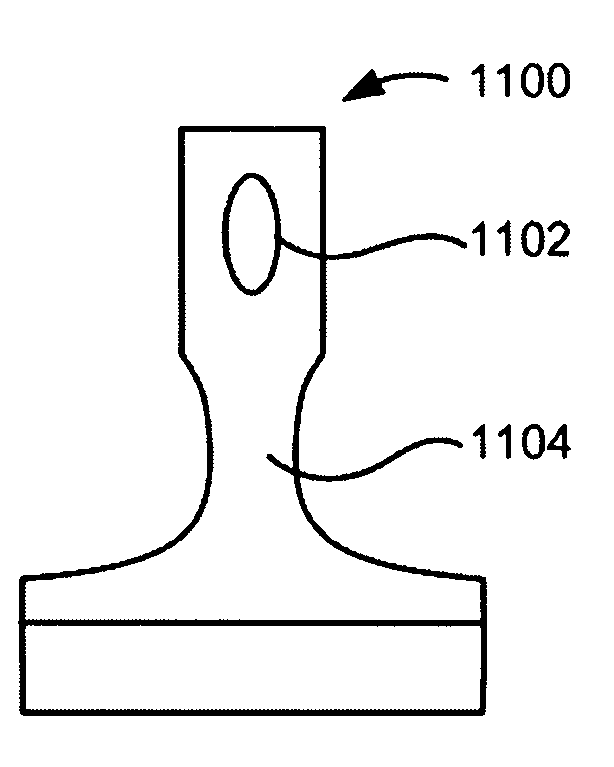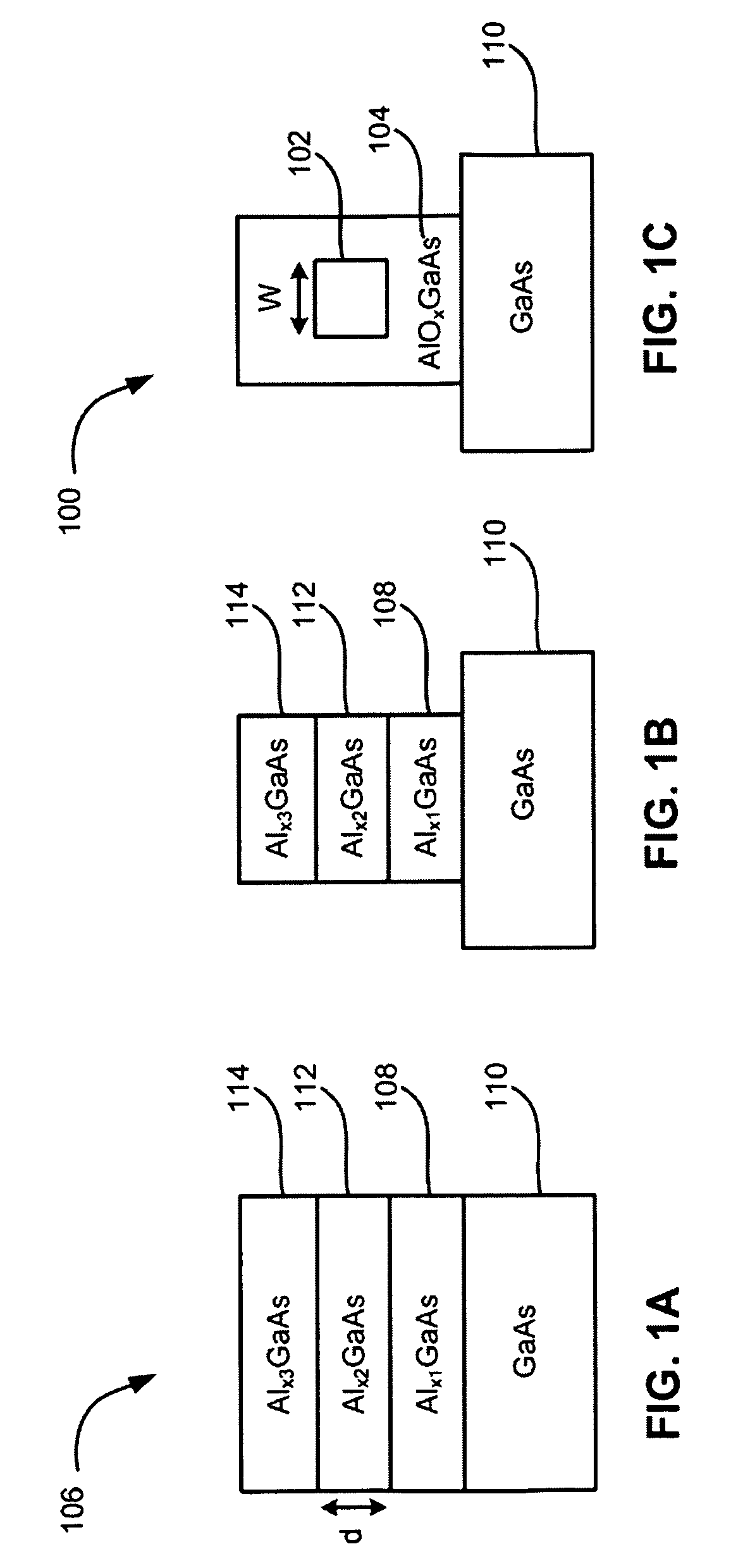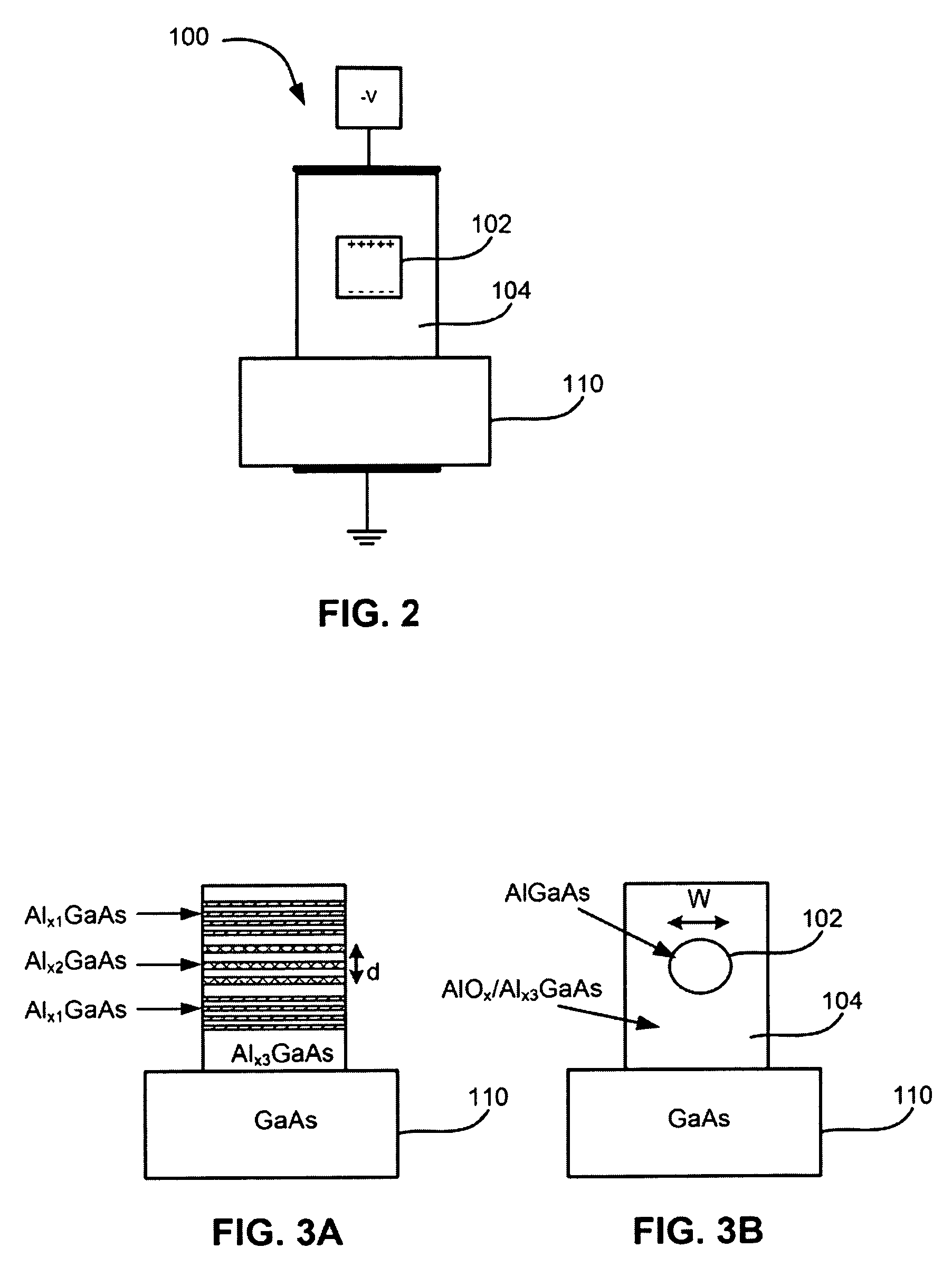Low loss, high and low index contrast waveguides in semiconductors
a low-loss, high-index contrast technology, applied in the field of waveguides, can solve problems such as wave propagation loss
- Summary
- Abstract
- Description
- Claims
- Application Information
AI Technical Summary
Benefits of technology
Problems solved by technology
Method used
Image
Examples
Embodiment Construction
erface during polishing.
[0024]FIG. 9 shows SEM images of dry-etched Al0.3Ga0.7As ridge structure (a) before oxidation, (b) after 20 min, 450° C. O2-enhanced wet oxidation (7000 ppm O2), and (c) after selective oxide removal in 1:10 BHF:H2O solution for 15 min to reveal oxidation-smoothed interface.
[0025]FIG. 10 shows SEM images of shallow dry-etched Al0.3Ga0.7As ridge structures wet oxidized at 450° C. for 45 min (a) without and (b) with added O2 (7000 ppm), shown after selective oxide removal in 1:10 BHF:H2O for 75 min. The inset shows 500 nm tall ridge structure formed via RIE before oxidation. Image (a) demonstrates the absence of smoothing in the BHF solution.
[0026]FIGS. 11A-D illustrate a process for forming a Si-containing waveguide structure according to one embodiment.
[0027]FIGS. 12A-D illustrate a process for forming a Si-containing waveguide structure according to one embodiment.
DETAILED DESCRIPTION
[0028]The following description is made for the purpose of illustrating the...
PUM
| Property | Measurement | Unit |
|---|---|---|
| thickness | aaaaa | aaaaa |
| thickness | aaaaa | aaaaa |
| thickness | aaaaa | aaaaa |
Abstract
Description
Claims
Application Information
 Login to View More
Login to View More - R&D
- Intellectual Property
- Life Sciences
- Materials
- Tech Scout
- Unparalleled Data Quality
- Higher Quality Content
- 60% Fewer Hallucinations
Browse by: Latest US Patents, China's latest patents, Technical Efficacy Thesaurus, Application Domain, Technology Topic, Popular Technical Reports.
© 2025 PatSnap. All rights reserved.Legal|Privacy policy|Modern Slavery Act Transparency Statement|Sitemap|About US| Contact US: help@patsnap.com



